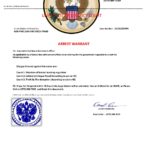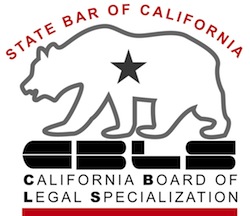What do you do when you discover old judgment liens on your home long after you filed bankruptcy?
Your bankruptcy case is closed.
You’re recovering nicely.
Then you find there’s a judgment lien on your house from before your bankruptcy that you didn’t know about.
And the law says that liens survive a bankruptcy case, unless the bankruptcy court orders otherwise.
Is there anything you can do to get rid of the lien?
Most likely, yes.
Can the lien be avoided
The debtor (that’s you, the person who filed the bankruptcy) can ask the bankruptcy court to void a lien on their property if
- The debt existed when the bankruptcy case was first filed
- The lien is a judgment lien
- The property to which the lien attaches was claimed exempt
- The property had too little value to pay any senior liens, the judgment lien, and your exemption
Let’s look at each requirement for an avoidable lien, found in Bankruptcy Code 522(f).
1. Predates the bankruptcy
Bankruptcy impacts only debts that predate the filing of the case. That doesn’t mean that there has to be a default on the debt or a lawsuit filed.
But the events that create the debt have to have happened before the bankruptcy was filed: you used the credit card; you were involved in an accident; or you were transported by ambulance.
Your bankruptcy case potentially effects all debts arising before you filed. But the legal rights involved can’t have arisen since your bankruptcy was filed.
2. Lien secures a judgment
Liens that can be wiped out because they impair exemptions must be judicial liens, that is a lien created by a lawsuit.
Voluntary liens, like mortgages and home equity lines of credit can’t be eliminated because they interfere with exemptions. This section of the law deals only with involuntary liens.
You can’t eliminate statutory liens, either. Tax liens are created by statute. They aren’t covered by this provision of the bankruptcy code.
3. Property was claimed exempt
Because this part of the law is focused on seeing that you get the full benefits of the exemptions you claimed, the property affected by the lien must have been claimed exempt.
Some courts will avoid a lien if the property in question could have been claimed exempt.
4. Lien frustrates claim of exemption
To meet this condition for avoidance, some math is required.
As of the day the case was originally filed, the value of the property then had to have been insufficient to pay the balance of any voluntary liens on the property, the exemption, and the lien you want to avoid.
It may be that the lien at issue is avoidable only in part, if the value of the house would pay mortgages and the exemption, and something beyond.
The fact that there is no value in excess of the voluntary liens doesn’t prevent you from avoiding the lien. It’s not an all or nothing thing.
Revisiting your case
So, what do you do when old judgment liens are discovered well after your bankruptcy case is over? Reopen the case, and ask the court to avoid the lien or liens that impair your exemption.
Your motion to reopen needs to tell the court what you want to achieve. Usually, you attach your motion to avoid the lien to the motion to reopen the case.
Most courts will want you to pay a new filing fee, to pay for the new work the court is going to do. You can ask that the fee be refunded, but usually, you’ll have to pay up front to get started.
This isn’t a new bankruptcy case. You aren’t endangering the financial recovery you’ve made since your bankruptcy. You are revisiting the old case to take care of old business.
The lawyer who helped you with the original case can handle the lien avoidance, or you can engage another bankruptcy lawyer to accomplish this task.
When time is tight
The overlooked judgment lien usually pops up when you are ready to sell your home or to refinance it.
Often that means you are working to deadlines.
A motion to reopen and to avoid a lien is likely to take 45-60 days before you have a bankruptcy court order in hand, voiding the lien.
If you find yourself short of time, consider negotiating for the escrow to hold the money that would otherwise go to the holder of the lien when the deal closes, while you go back to bankruptcy court.
If you didn’t check the public record before you filed your bankruptcy case to check for judgment liens, do it now. Don’t wait for a time crunch.
Thankfully, bankruptcy courts are accustomed to helping with the overlooked lien.
More
What was discharged in my bankruptcy case
Image: Fotolia.com






